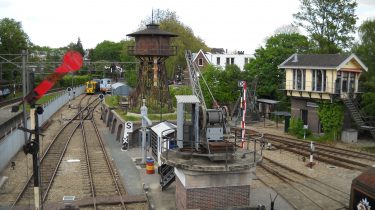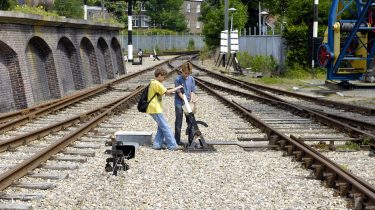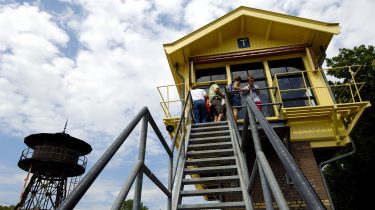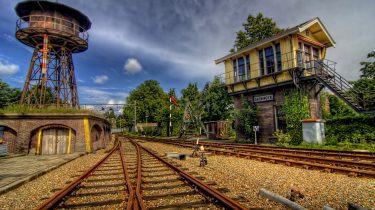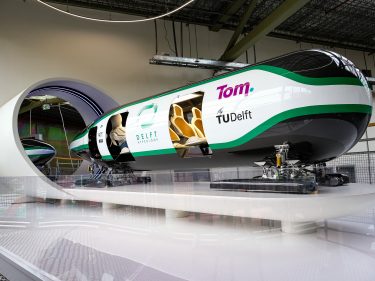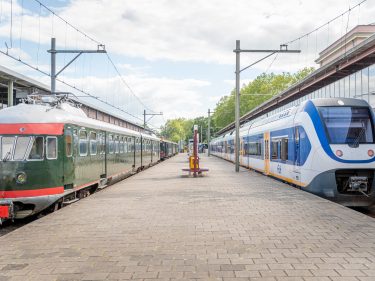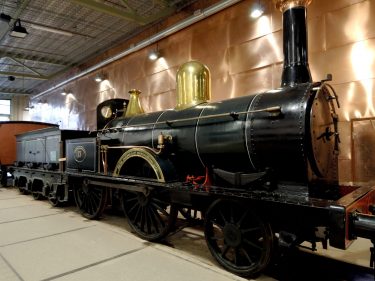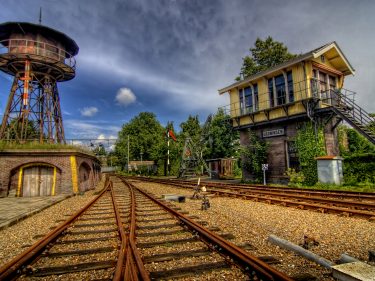Utrecht Maliebaan work site
- Activity
- Not to miss
- Age
- All ages, Children up to 3 years, Children ages 4+, Adults
Signal box
This signal box was built in Hoogezand-Sappemeer for the national railway company in 1911. It was decommissioned in 1986, after which it was reconstructed on the grounds of the Railway Museum in 1988. The large ‘T’ above the entrance to the signal box was used to indicate that either a train dispatcher worked in the signal box or that the box held a telephone or telegraph you could use to contact a train dispatcher. Train dispatchers were tasked with overseeing the safety of a specific section of railway, which included responsibility for the signals.
Inside the signal box there is a mechanical control device with levers and handles that, when pulled, operate the various signals and points. The signal box at the Railway Museum is still in working order; the museum’s volunteers frequently give demonstrations of how the control device works.
Water tower and coal crane
The water tower and coal crane were needed to fill the tenders of the steam locomotives. The heavy coal-cars were filled by the depot crew and quantities were monitored very precisely by the supervisor. Coal was an expensive commodity – so no funny business was allowed! Every kilo was carefully recorded and if the engine driver used too much on a given trip, he would miss out on a bonus. Next to the coal crane, you can see the supervisor’s office and the coal-cars ready and waiting.
The yellow workmen
All around the train yard, you’ll find little yellow statues atop poles scattered about. What was the signalman’s job, how did the shunter carry out their tasks and how physically taxing was it to be a way worker? Push the button and hear the stories about working on the railway.
